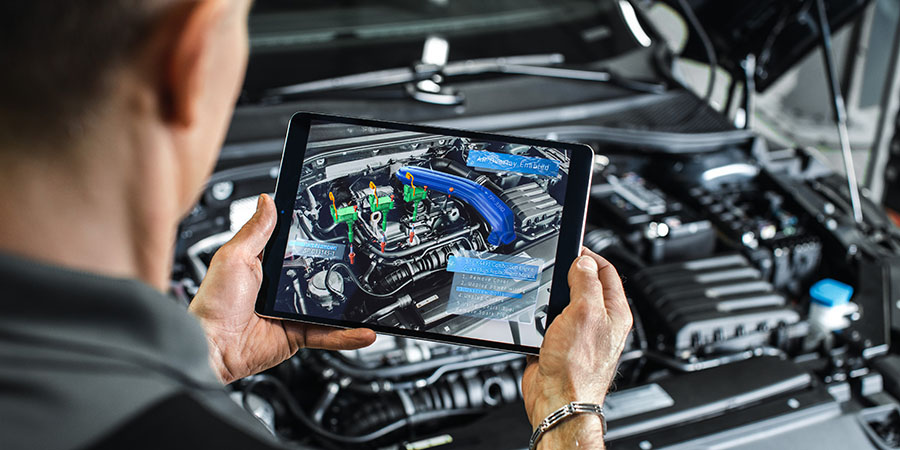
Virtual and augmented reality (AR) have long been the stuff of science-fiction movies, but overlaying relevant, contextual data onto real-life objects has always seemed like the logical next step in manufacturing processes. So far though, AR is only just starting to catch on in the industrial world. However, with AR solutions getting more affordable and easier to use each day, that’s all about to change.
Due to the fast adoption of cloud technology, vast improvements in software capabilities, and next-gen hardware, AR is now ready for the big league. In this blog we provide you with a five-step guide to getting started with your first AR project.
Even though AR applications are all about bringing digital content to life, they are fundamentally designed to solve challenges in the physical world. That’s why every successful AR project should start with a thorough investigation of the business issues it can help solve. Doing this will help you determine the types of software and hardware that can deliver the most value, while also providing you with an understanding of where AR can generate the biggest ROI.
Investigating business challenges in the physical world calls for close collaboration with your operators and plant managers. When communicating new processes to your frontline workers, stress that the innovation you want to introduce is not another ERP project, resulting in complicated screens and workflows for them to navigate. This time, you are here to bring new, innovative technology that provides instant business value by making complex processes and workflows easier for them.
Currently, many operators lose valuable time retrieving work instructions or standard operating procedure information from a wide array of sources. Even paper checklists or occasional phone calls to other sites are still common. With AR, you can put information like CAD or IoT data directly at your workers fingertips, providing them with the information they need at the exact time they need it. Over the last few years, we have seen great advances in the way that AR software can integrate outside data – meaning that you don’t have to start from scratch to create an effective AR experience.
For digital twin value to be recognized the insights need to tie directly to a workflow/ task and accompanying goal:
AR is most commonly used to improve manufacturing, quality control, or repair processes performed by operators on the work floor. By overlaying the view of a component or engine with relevant data on the model type or suggested settings, an operator can perform his tasks significantly faster and easier. But AR can also be used to document each step that a domain expert takes when working. This information can be captured first-hand, then used to educate juniors in the field, which is essential with the impending retirement of many of your veteran operators. AR makes facilitating this kind of knowledge transfer simple than ever before, without disrupting the work schedules of your high-value employees.
AR progress is accelerating rapidly. Now that hardware such as the HoloLens 2 is here and organizations are embracing connected workers, we are seeing AR deliver unprecedented business value across a variety of industries. Developing valuable augmented reality applications now takes only a matter of weeks, allowing organizations to experiment and adopt at breakneck speeds.
Let this be a reason for you to explore the possibilities of augmented reality. Get inspired by our case study for Volvo and get in touch now to see how we can help.

Greg is an avid blogger interested in industrial innovation, technology, and the intersection between the two. As a Content Marketing Specialist for PTC, Greg is excited about how things like virtual and augmented reality, the internet of things, and predictive analytics are shaping the future of manufacturing.
©Copyright 2025. All rights reserved by Modelcam Technologies Private Limited PUNE.